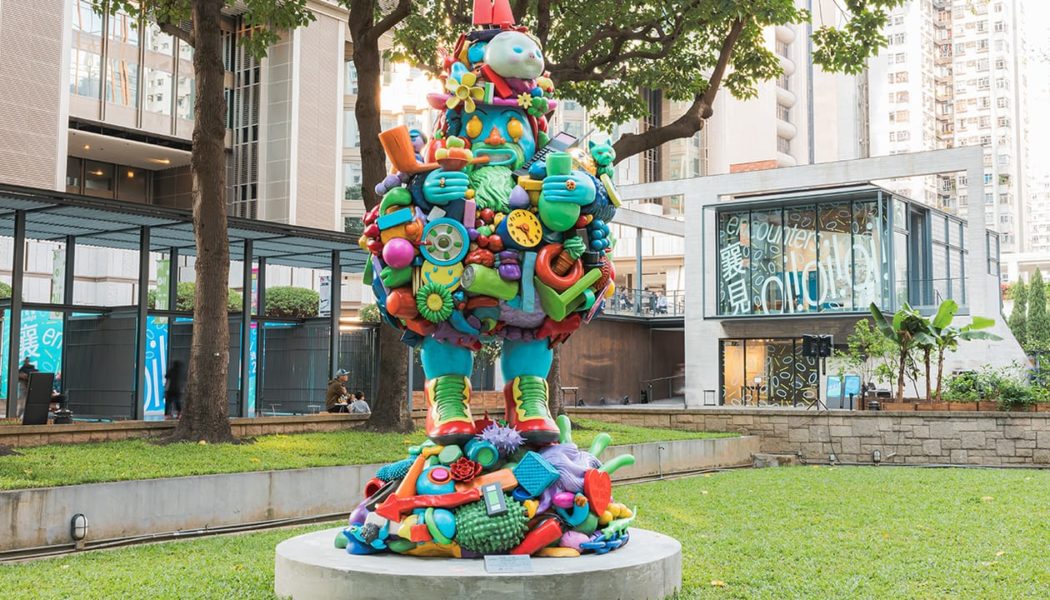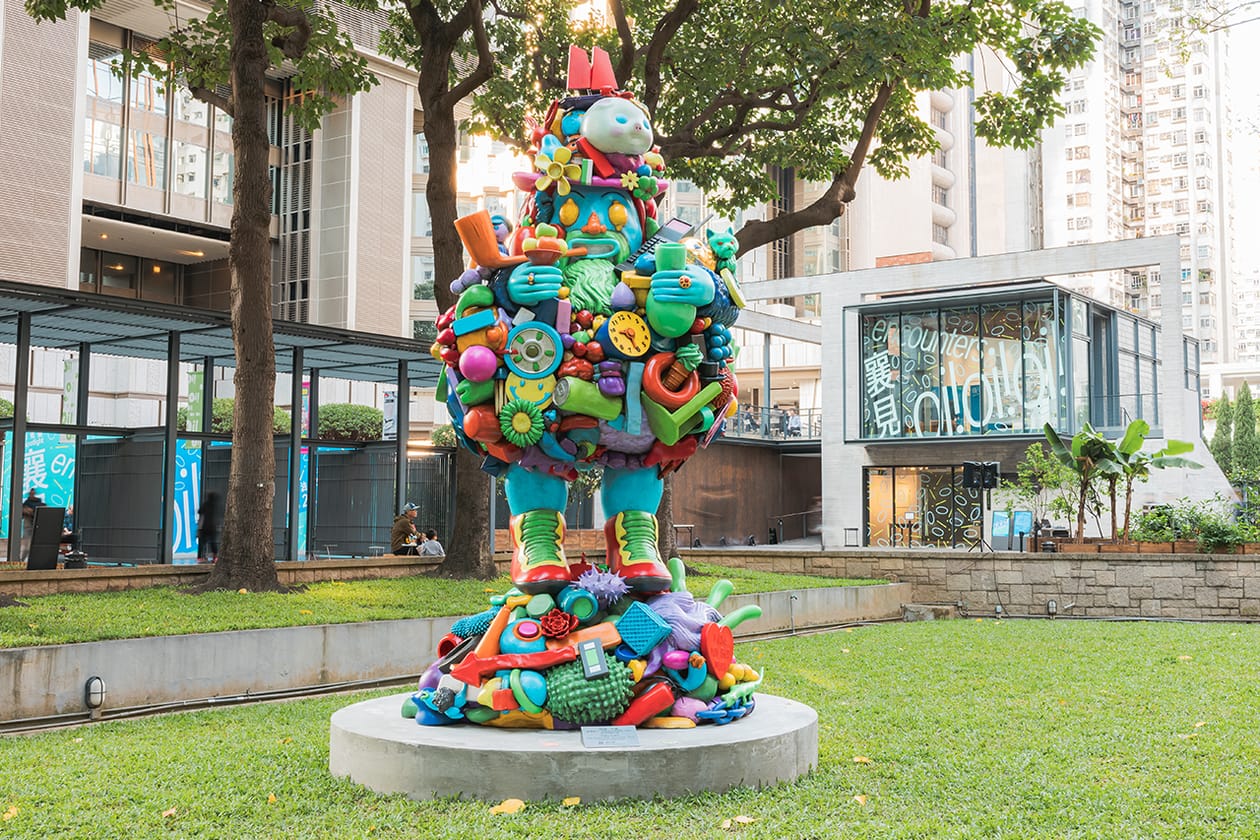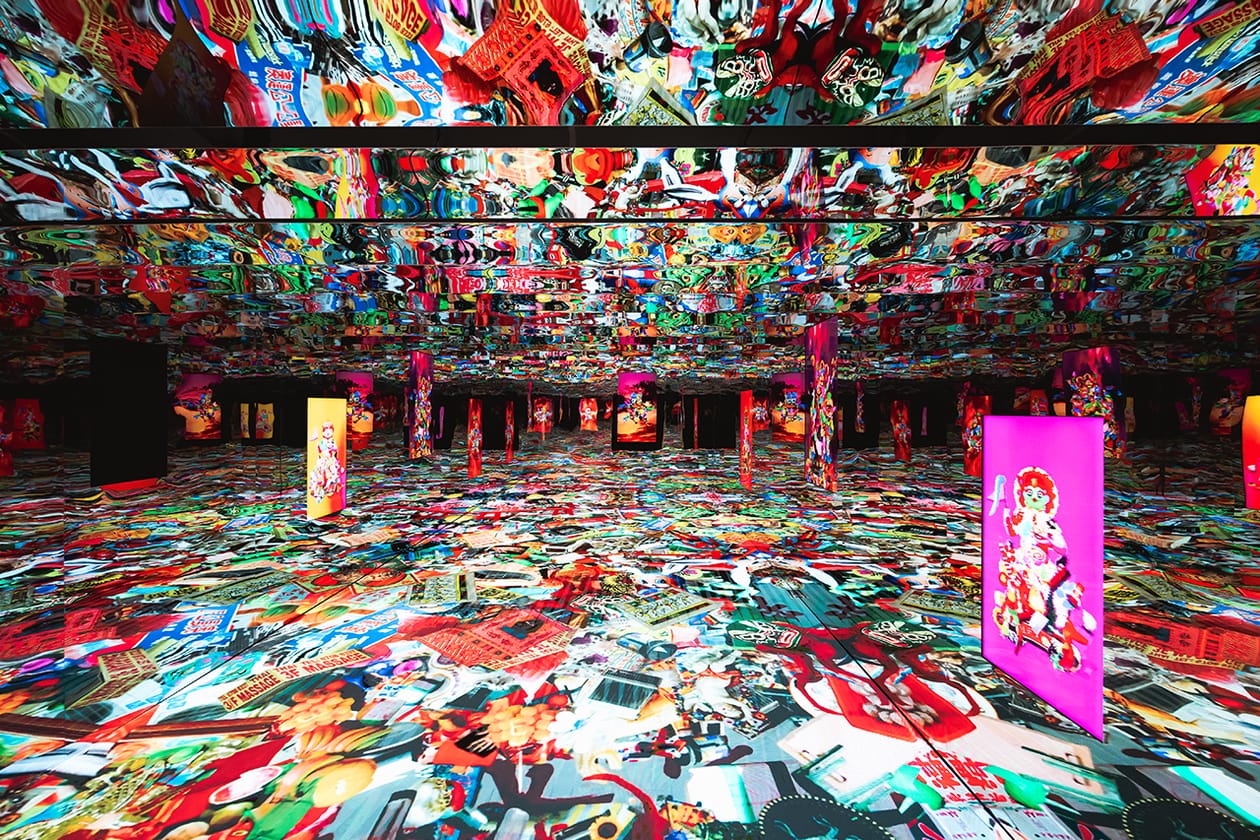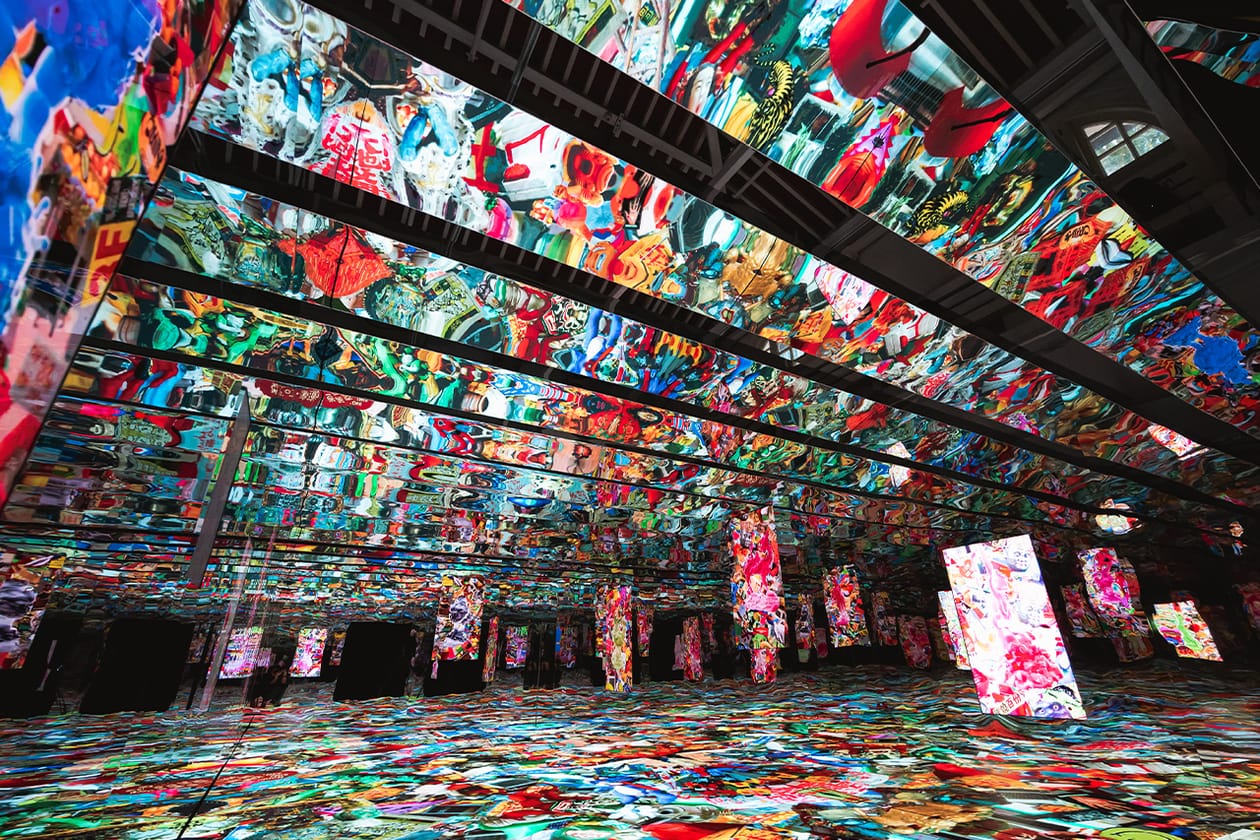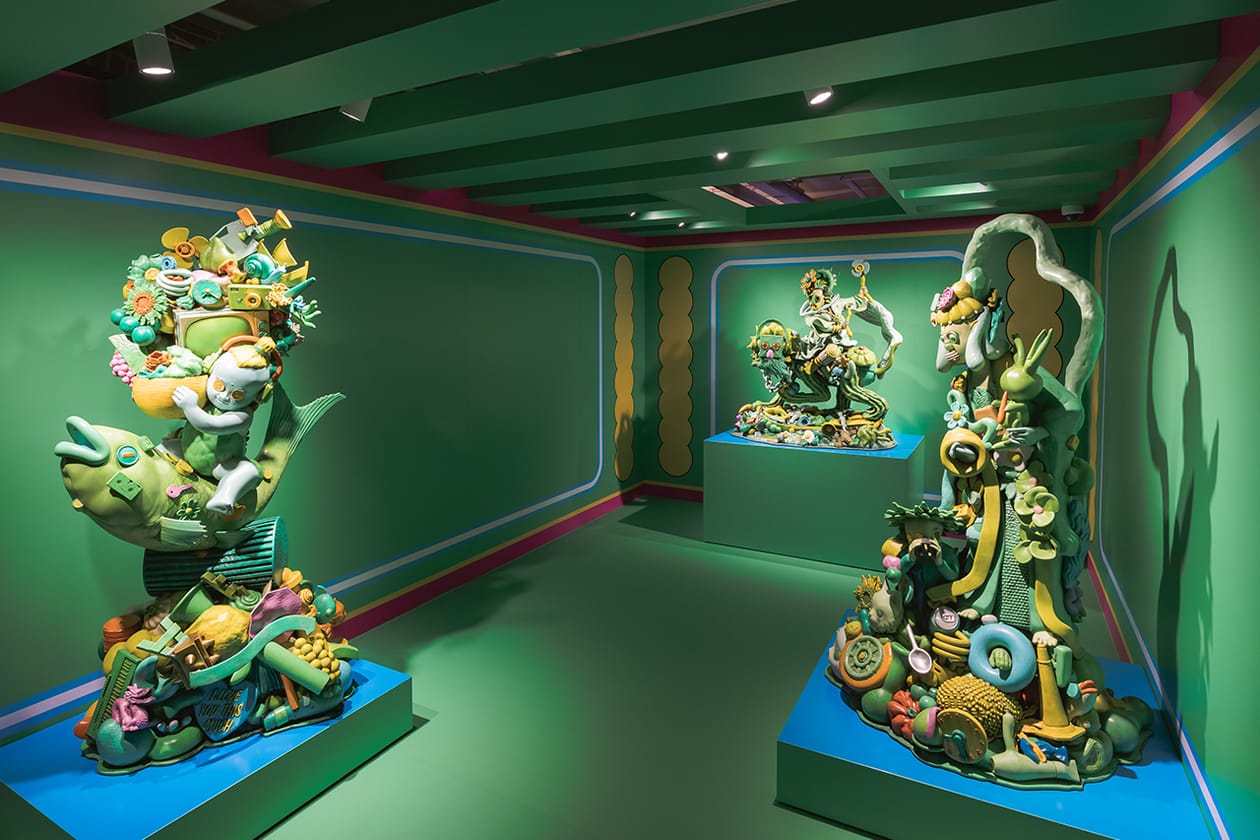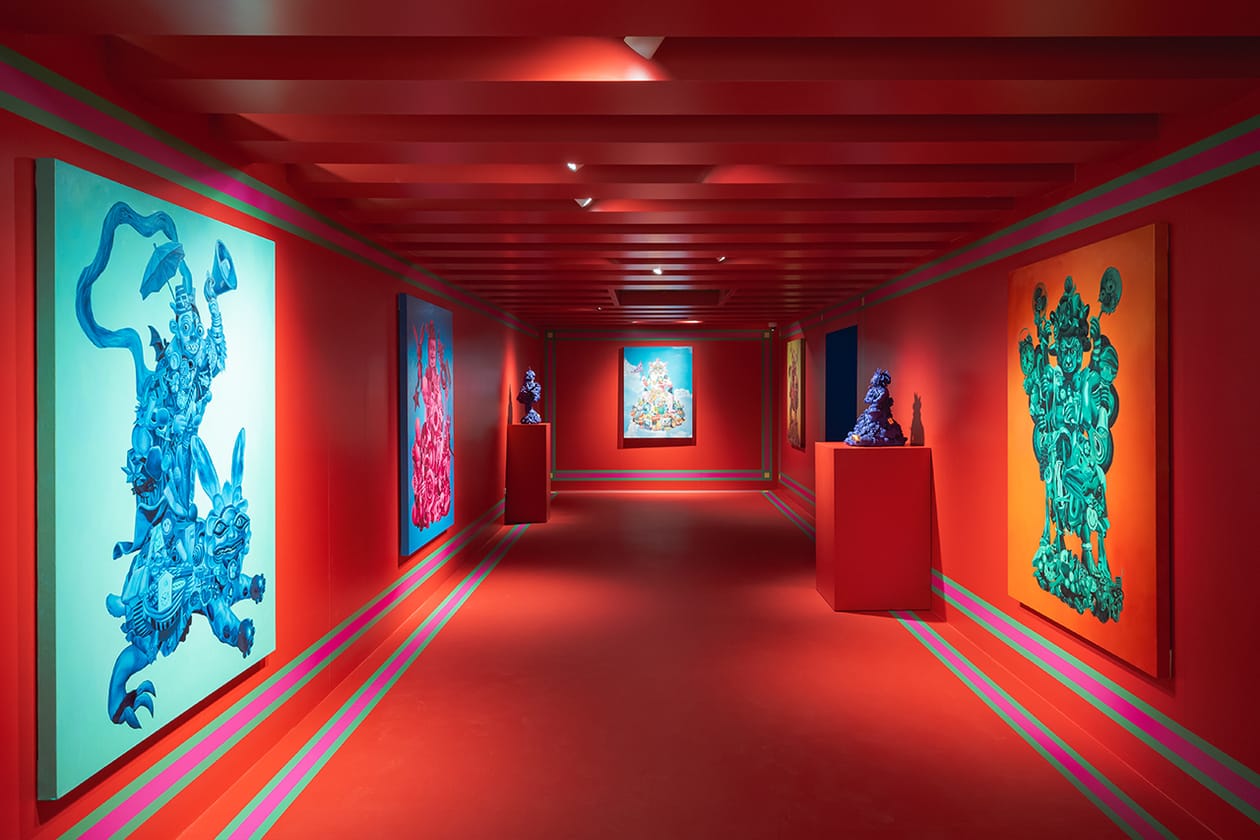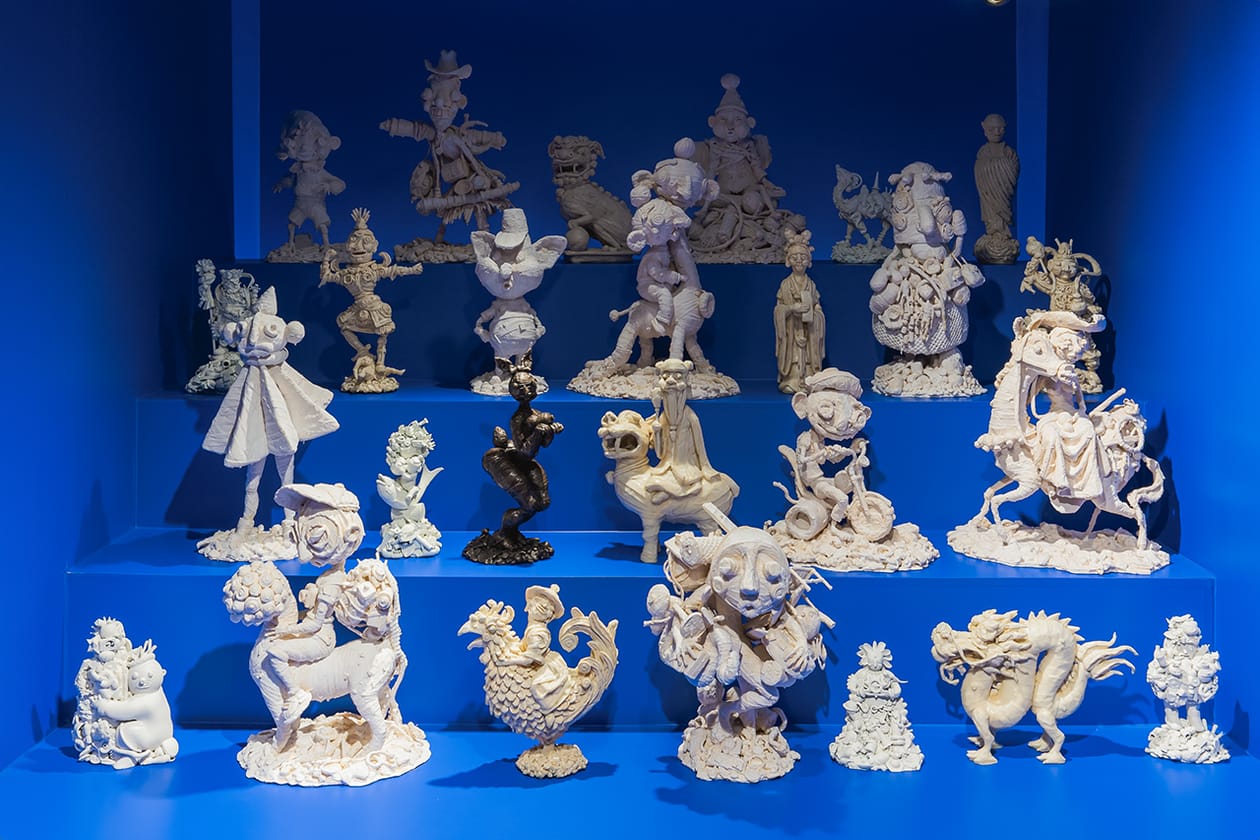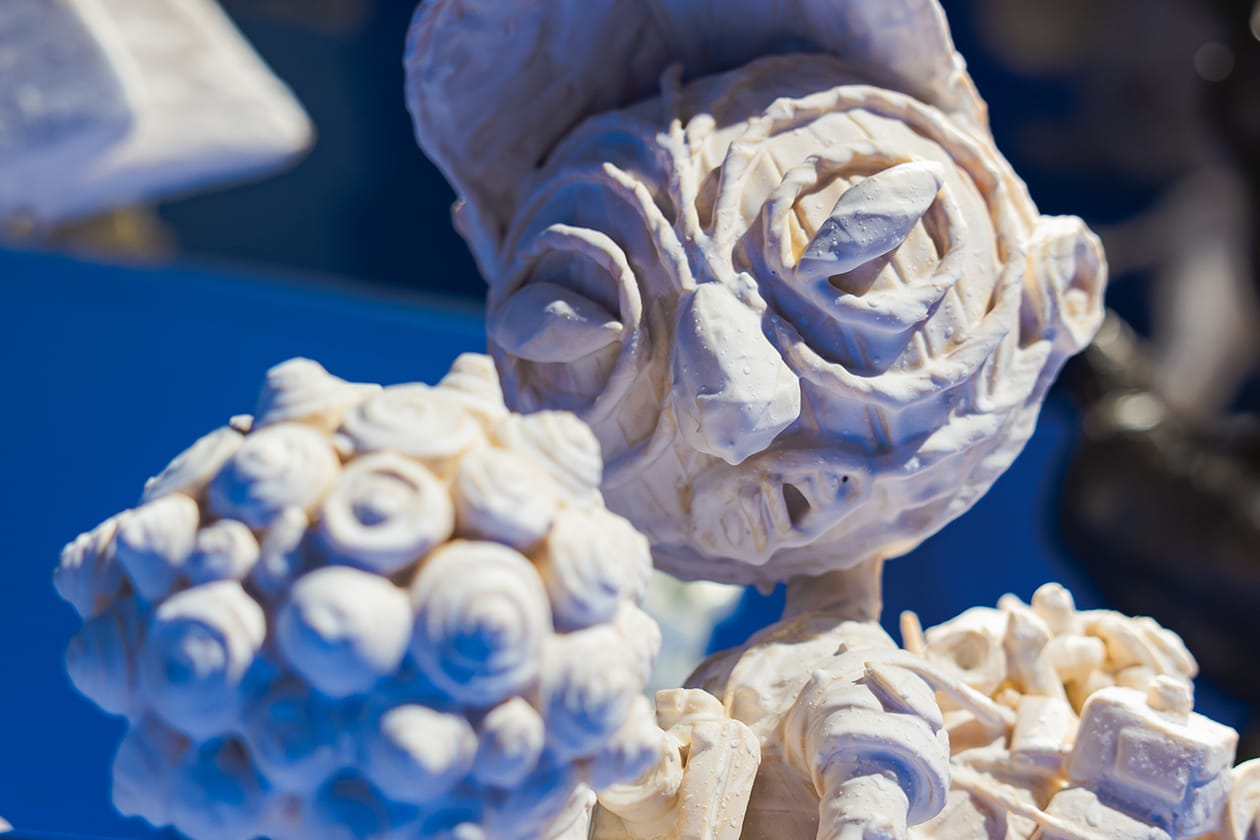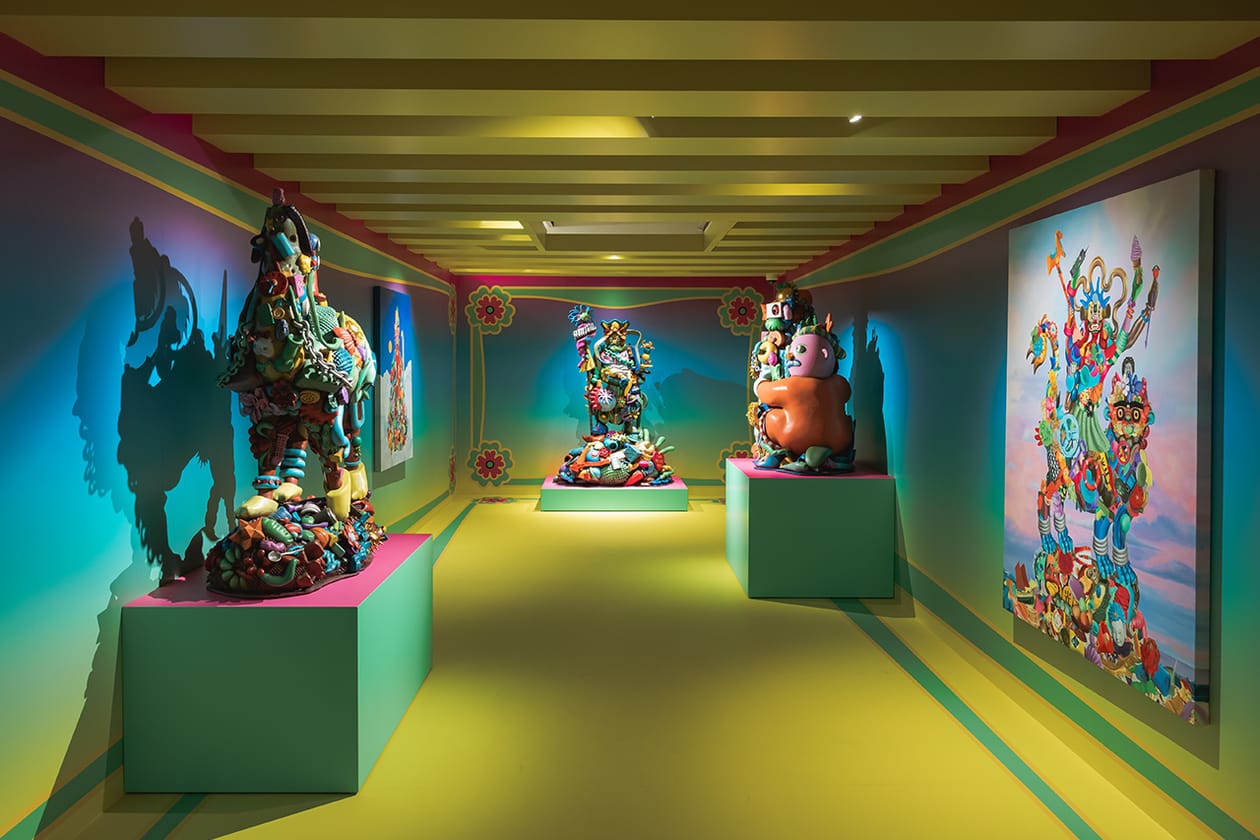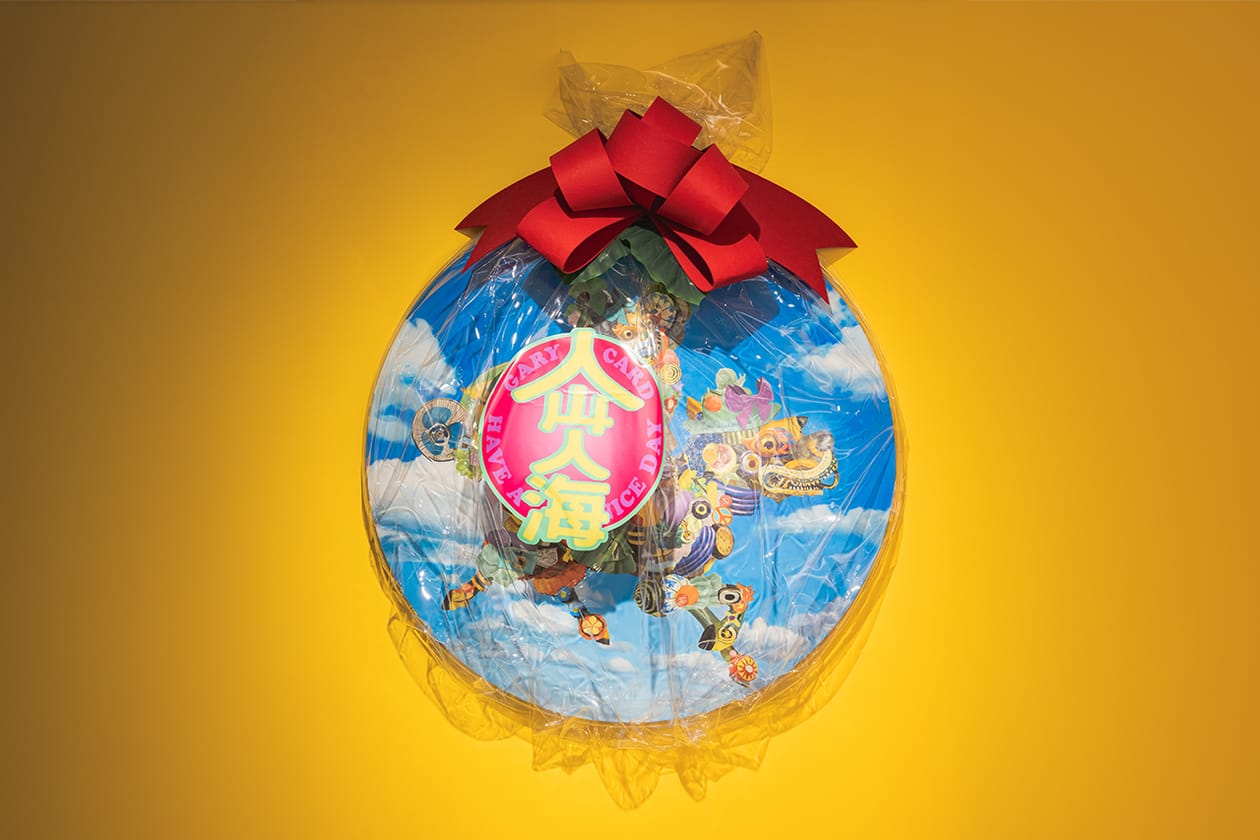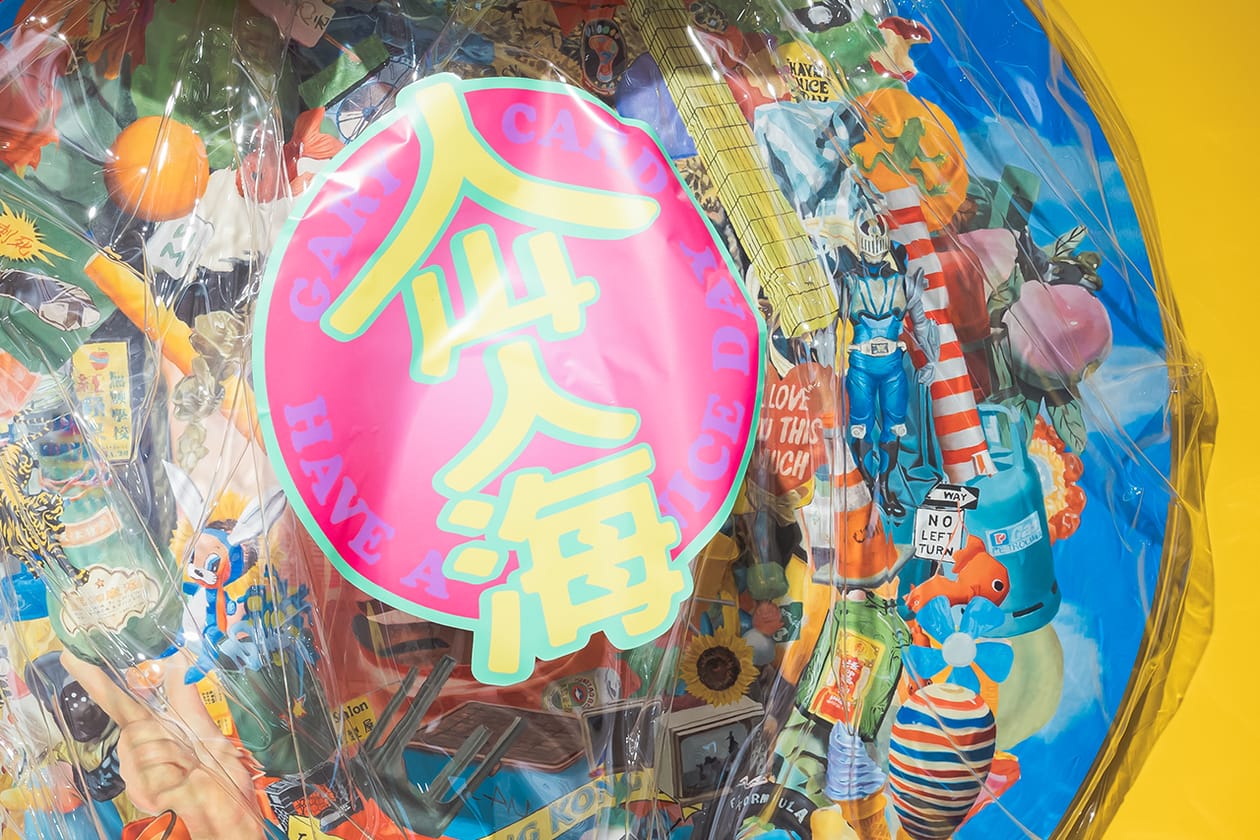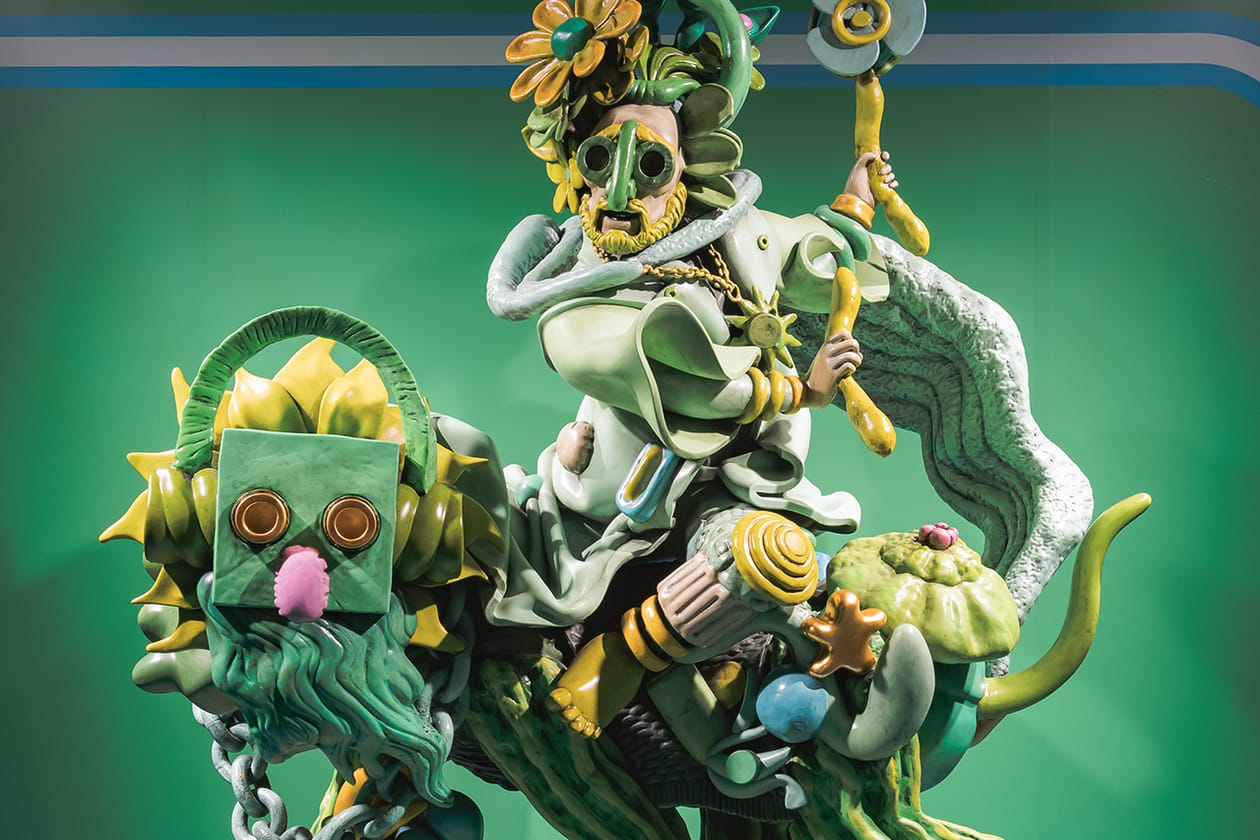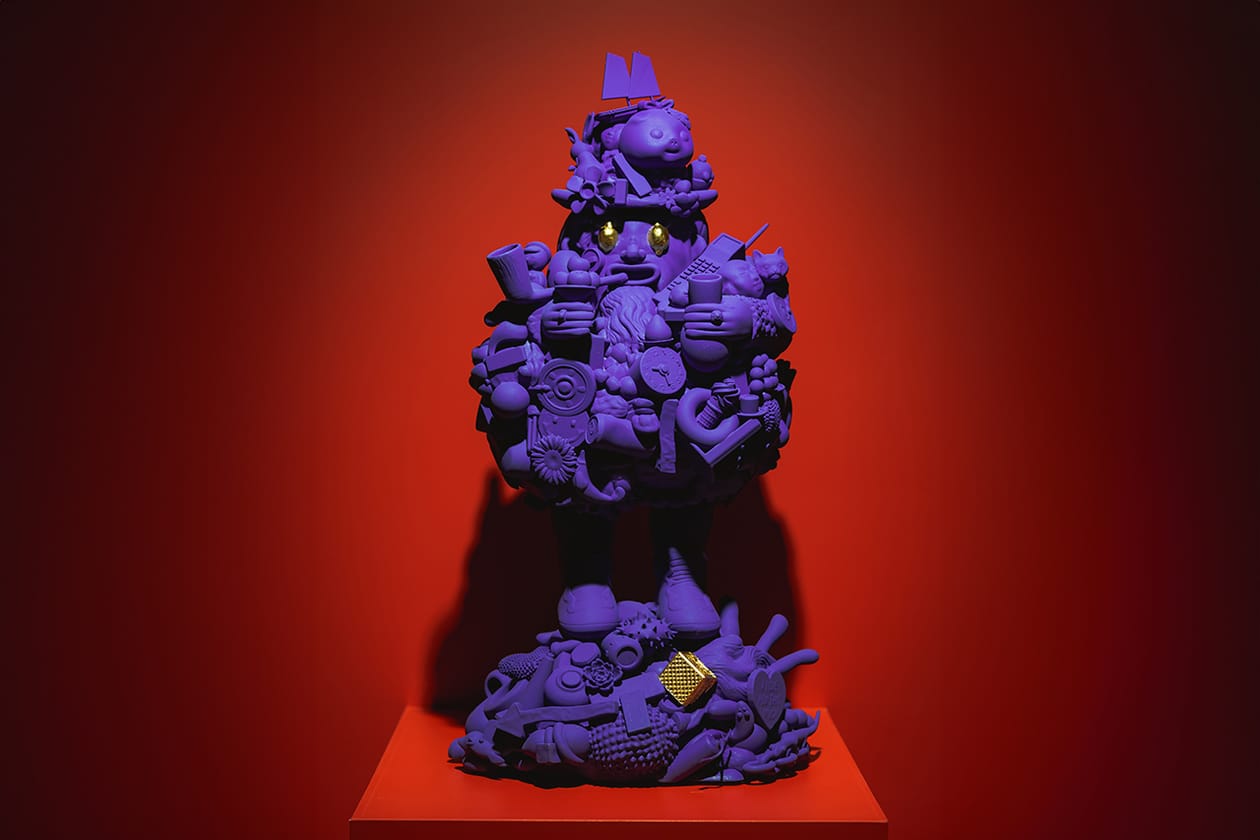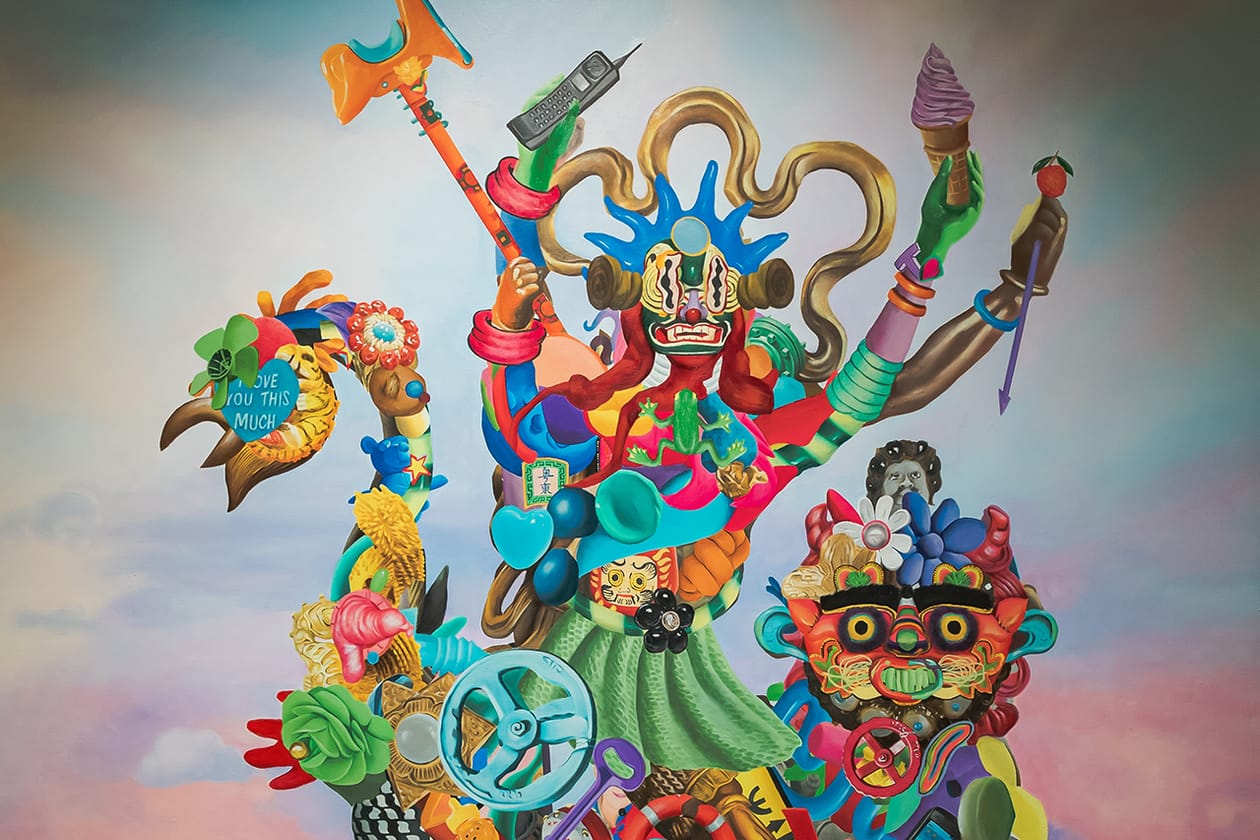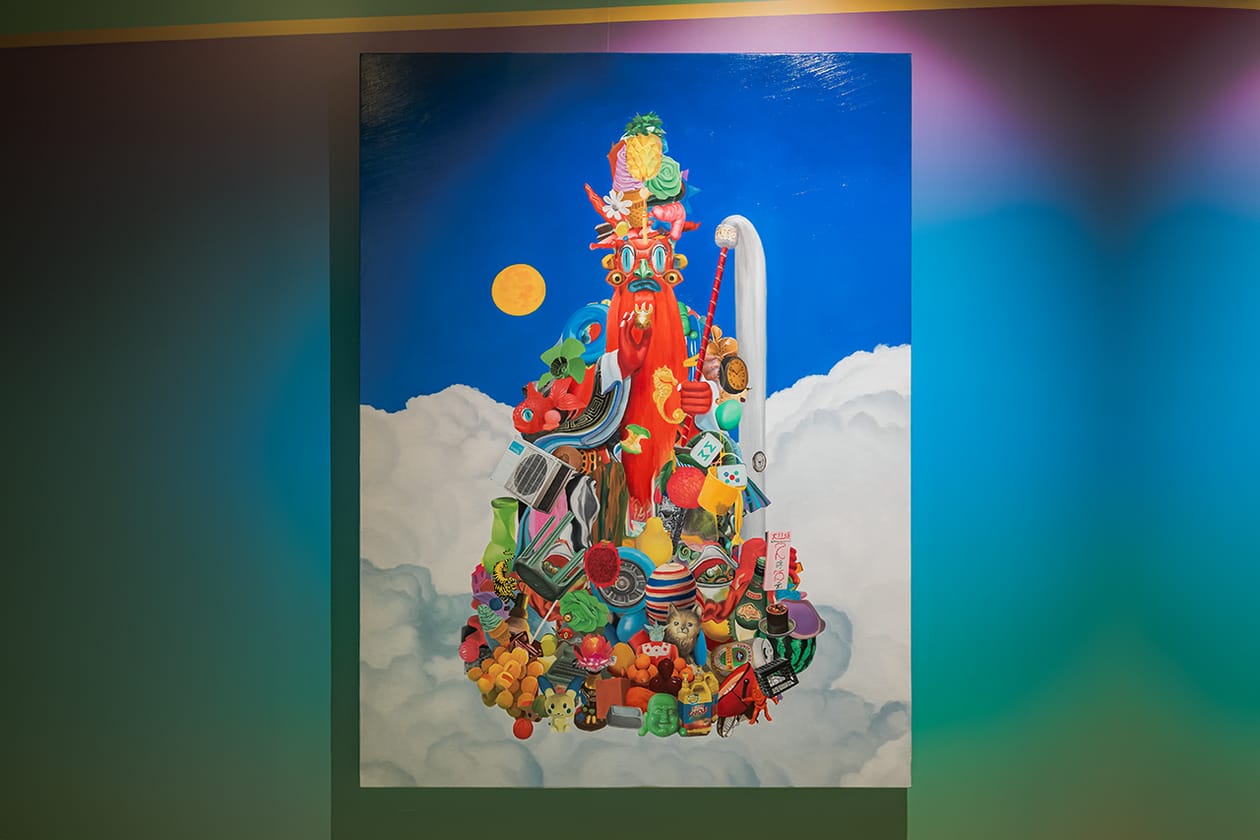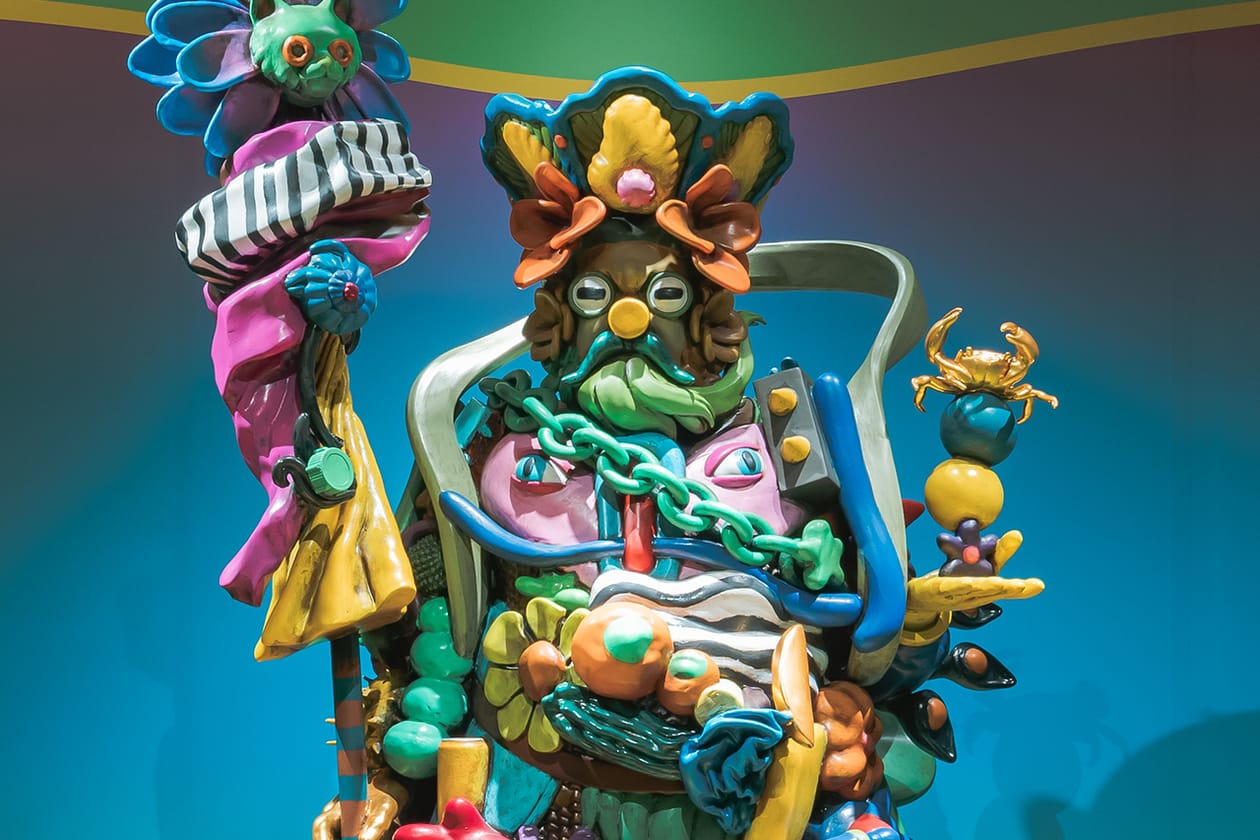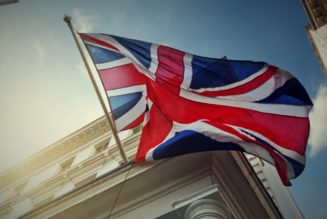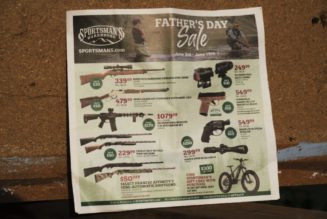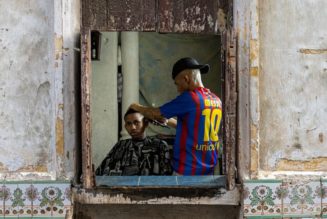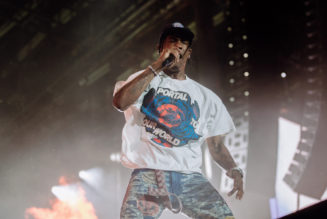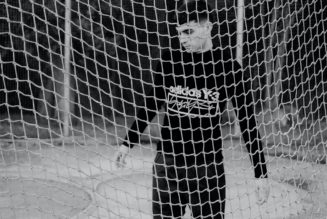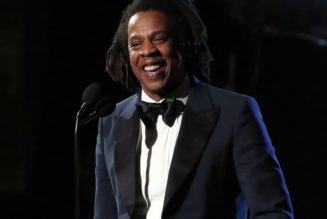You are reading your free article for this month.
Members-only
Ahead of Art Basel Hong Kong, Gary Card opened his first major solo exhibition at the city’s Oil Street Art Space – a community-oriented gallery space converted from a preserved heritage site. The London-based multi-disciplinary artist and set designer has produced work for fashion editorials and campaigns in the past, where he worked with notable names such as Louis Vuitton, Balenciaga, Comme Des Garçons, Gucci, JW Anderson, Vogue, and even Lady Gaga.
The unique space is an amalgamation of contemporary and heritage that echoes its neighborhood, which is vastly populated both commercially and residentially. Inside this embodiment of contrasts, Gary Card’s People Mountain People Sea is perfectly situated as it explores the dichotomies between disposable and sacred objects via his arrestingly vibrant and eerily captivating, east-meets-west vision.
Spreading across an outdoor area and two indoor spaces, the exhibition invites visitors to explore within, starting with “The Dream of Mr. Somebody” – a towering and colorful statue located on the lawn by the entranceway. Inside the first warehouse, Card had transformed the historic building into an immersive and multi-sensory experience. Animated collages are projected from the flooring and are reflected in the mirrored walls and ceiling beams, creating a perpetual landscape that allows the visitor to become a part of the artwork. The walls are also fitted with individual screens to showcase his digital and design processes.
The other warehouse space features three separate rooms, each coded in a different color theme: there’s the Jade Room on the right, the Red Room in the middle and the Rainbow Room on the left. Each room is decorated with paintings and large sculptures that are materialized from collages made from photographs he took around the city. A small shrine-like space is located inside the Red Room, which serves as an archival corner for various masking tape prototypes, maquettes as well as pieces from his previous projects. The rooms are separated by bright yellow pillar-esque corridors, each adorned with a large prop-like artwork that nods to fruits in plastic gift wrappings that can be found in any fruit market stall in Hong Kong.
Before the exhibition opening, Gary Card walked Hypebeast through the setting of People Mountain People Sea, where he discussed everything from the messages he wanted to convey, as well as the challenges he faced during his artistic journey.
Can you tell us the story behind “The Dream of Mr. Somebody?”
Gary Card: Oil gallery wanted me to make a piece for the public to view, but also to attract them into the space. The idea of making a five-meter-tall sculpture was a no-brainer to me. “Mr. Somebody” is based on a historical figure from the 17th-century figurine called “Mr. Nobody, but also an extension of my last project, “Homunculus,” as he theme of “Homunculus” was about taking historical figures and doing new things with them.
I wanted to make something that is community-driven and will excite the people who walk by, something that entices anybody to come in and hang out, or have lunch by it. This is a gallery that invites people in as it’s ultimately a community space, which is exactly what I want to do with People Mountain People Sea, really.
What’s the story behind the title, People Mountain People Sea?
I don’t know if it’s a controversial thing to say but I am inspired by Chinglish – I love it in fact. It’s a cultural exchange and it’s language put through a filter. Through that filter, you get something different, and “people mountain people sea” is a traditional Chinese saying that’s been put through that filter and come through as English, and it’s given a completely different meaning. We went through lots of different idioms, but this one just stood out and has a really lovely rhythm to it.
What I love about this phrase in particular is that it’s so visual. It describes heavily populated areas and that made perfect sense in terms of what we were trying to do. My work itself is very busy and it’s always fizzing with detail and life – that’s what the title meant to me. It’s also a very literal interpretation of Hong Kong, as the city is literally surrounded by mountains, people and sea.
In general, where do you draw inspiration for your art?
I guess this goes back to my practice as a set designer for over 20 years. I make sets and props for fashion campaigns that entice people to buy things, but at the same time, I’m interested in the stuff that we consume as well. Maybe it’s a part of me trying to reconcile with my guilt for being part of that industry, and so my art is almost like an antithesis of that idea.
I’m more interested in things that are real, like traffic cones and OLED TVs – the general bric-a-bracs and cogs and cans that make up the landscape we’re walking through. I’m constantly taking photos of random things like air vents and air conditioning because I’m excited about giving the things that others often ignore a new context.
“There’s a lot of cartoonish, irregularity and gleeful ugliness in my work that would never fit for any of my fashion clients. So, this is my way of rebelling against everything that I’ve been making for the last 20 years.”
Would you consider the aesthetics of your art similar to the feeling you get at thrift shops?
It’s somewhere between an antique store and a thrift store, and I love everything in between it. It’s the cross-section between the things that we dispose of and things that we hold sacred. Why is something special to you? We imbue objects with a memory and because of that, they become important to us. So it’s about reevaluating the relationship between our surroundings and belongings.
Coming back to me selling things to people for the last 20 years through my work, I feel like living in the 21st century is a constant push and pull between the excitement of the brand new things you want, and the guilt that you have because you know the process that goes behind it – it’s the simultaneity of pleasure and anxiety.
Did the process of finding and developing your style come naturally to you? Or was it something that took years and experimentation for you to discover?
I think it’s taken a few years to find the confidence to fly without a net. Working with established brands means you’ve always got the filter, but it’s never mine. I was always a little bit of a rebel in the sense that I tried to shoehorn my art into so many commercial campaigns. But for the last few years, I’ve been making things that I think people will respond to from my perspective.
In a way, I’ve been an artist for many years, but it has always been in a very commercial environment. Now, without the safety of a brand, can I make it by myself? Can I make art that engages people without JW Anderson or another brand under my name? There’s a lot of cartoonish, irregularity and gleeful ugliness in my work that would never fit for any of my fashion clients. So, this is my way of rebelling against everything that I’ve been making for the last 20 years.
Looking at the exhibition, you’ve got so many big sculptures, art pieces and even an interactive room across three separate spaces in the gallery. From the concept and development to building the installation, roughly how long did it take?
It took a year! Last year, we came to Hong Kong for a research trip where I took lots of photos and videos around the city to get a sense of what I wanted to say with this exhibition. In all honesty, I spent three months making things that I felt were just giving the Hong Kong audiences stuff they already knew, which had no point and wasn’t interesting.
So I threw all of it away, recontextualized and re-examined exactly what I wanted to do. The real interest in the city for me was its relationship between the East and West. This exhibition has been so many different projects – from immersive spaces, animations, sculptures, paintings and different iterations of set design. “Mr. Somebody” alone would take me from commission to end, six weeks to complete.
I’ve noticed there’s this little tiny heart-shaped message on all your sculptures, which reads “I love you this much.” Can you tell me a bit more about it?
A lot of what you see in the sculptures is very intentional and has a lot of historical meanings to it. We’re living in complicated times and I wanted to imbue the sculptures with a little bit of optimism. “I love you this much” is also a message from me to say thank you to the city.
“I want people to feel visually excited when they’re in these spaces, as Hong Kong to me is a place that’s fizzing with activity, color and life — I wanted my art to do the same thing.”
What do you want visitors to get from the experience?
Ultimately, it’s about having fun. I want people to feel visually excited when they’re in these spaces, as Hong Kong to me is a place that’s fizzing with activity, color and life – I wanted my art to do the same thing. I hope visitors can also see unexpected details they hadn’t thought about in the things they see every day here.
Seeing the final outcome in real life, is there anything different from how you envisioned it initially?
My primary focus was making the paintings and the sculptures and so the immersive room was more like a secondary thought initially. But when I saw it in real life, I instantly fell in love with it. I wasn’t prepared for how effective it would be and it’s been a tremendous joy being in that space. I feel like it might have accidentally become our secret weapon for the exhibition.
What’s in the pipeline for the rest of the year for you?
So, I’m the original designer of LN-CC’s store space, in which it was designed over 10 years ago. It’s been closed for two to three years now, and we’ve recently redesigned and rebuilt the entire space, which will be reopening simultaneously with People Mountain People Sea but of course, in London.
I’ve also just released “Sad Sack,” my latest toy with Unbox Industries. He’s actually very important to the nucleus of this show, as it’s made up of discarded objects and paraphernalia from different cultures and periods around the world. I’m also working on numerous portraits for a show I’m doing in London after I get back from this trip, so that’s my next big passion project!
Gary Card’s People Mountain People Sea is currently on view as part of Oil Street Art Space’s “Oi! Spotlight” program. The exhibition will remain open to the public until July 27, 2024.
Oil Street Art Space
12 Oil Street, North Point,
Hong Kong
